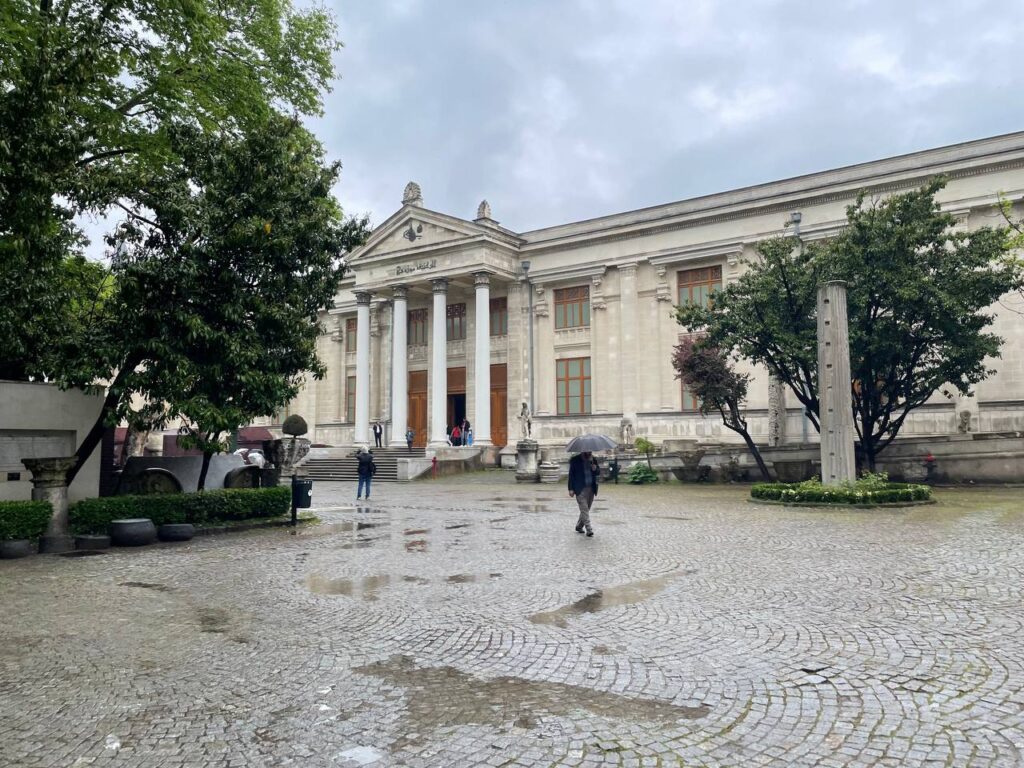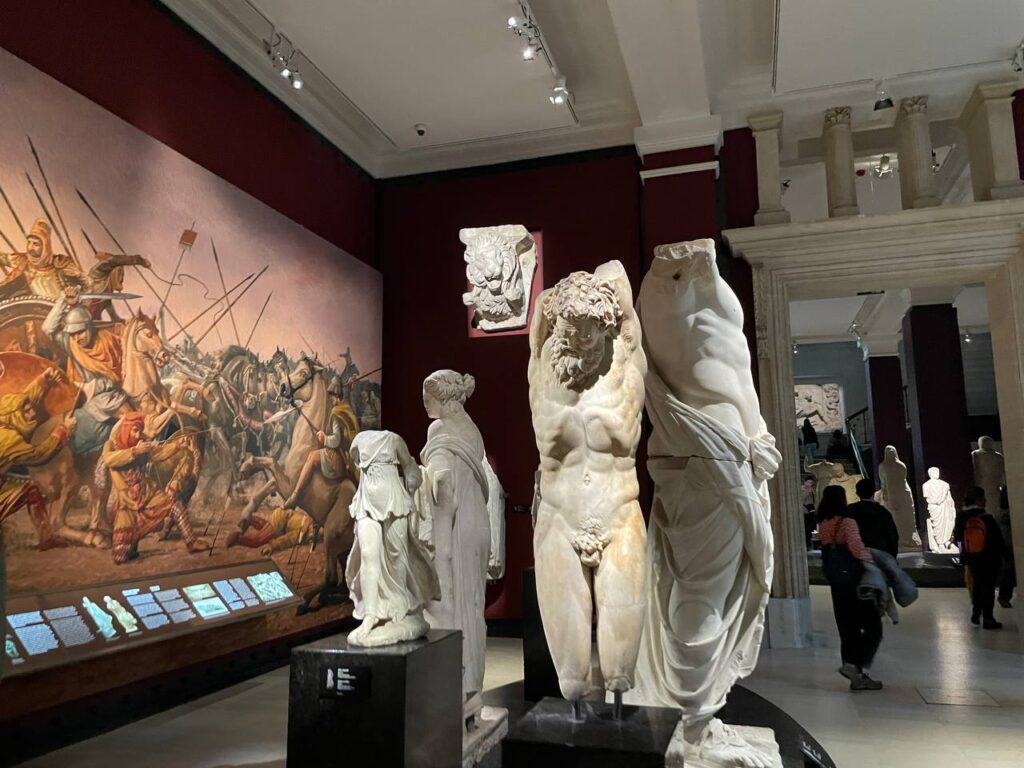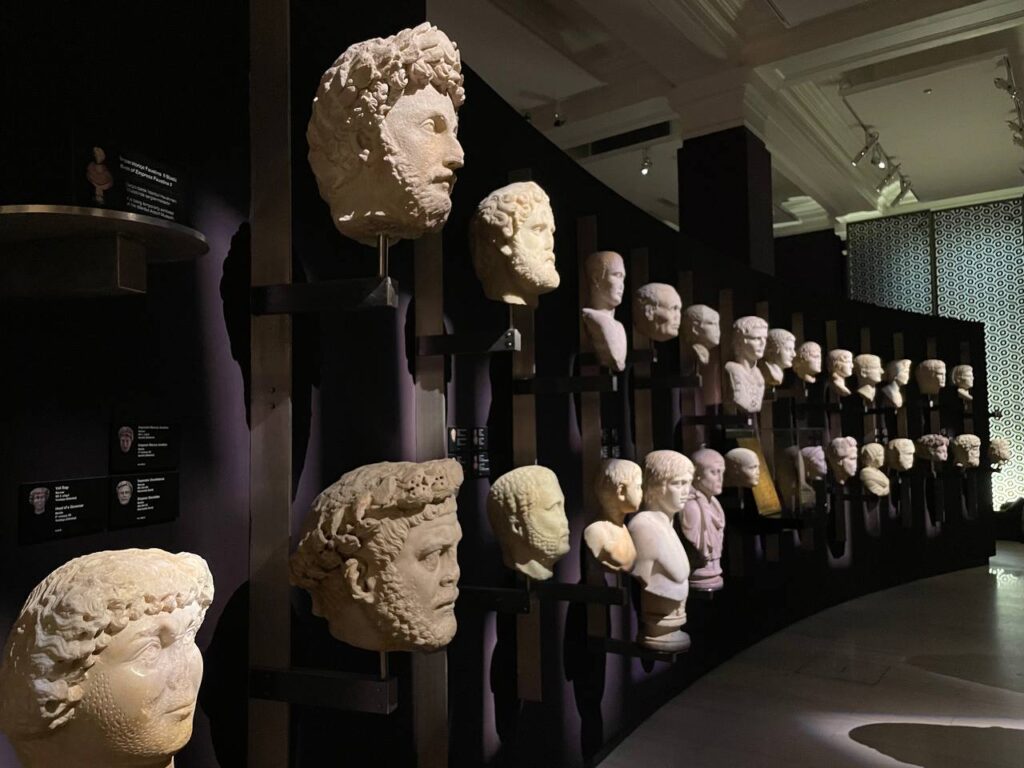Pay Once and Have Free Attractions Entry for 2, 3, 5 or 7 days
If you’re planning to visit Istanbul, you simply cannot miss the Istanbul Archaeological Museums. It’s a place where you can discover the rich history of Turkey through an impressive collection of artifacts and exhibits. The museum complex consists of three separate museums: the Museum of Archaeology, the Museum of Ancient Orient, and the Museum of Islamic Art. In this article, we’ll take a closer look at what makes these museums so special and provide practical tips for visiting.

History of the Istanbul Archaeological Museums
The Istanbul Archaeological Museums were founded in 1891 by Osman Hamdi Bey, a prominent Turkish painter and archaeologist. He was inspired to create the museum after discovering a number of important artifacts during excavations in Turkey. Over time, the museum’s collection grew as more artifacts were added from archaeological sites across the country. In 1903, the museum moved to its current location in the Gulhane Park. Today, the Istanbul Archaeological Museums are considered one of the most important museums in Turkey.

Location and Opening Hours of the Istanbul Archaeological Museums
The Istanbul Archaeological Museums are located in the Gulhane Park, in the Fatih district of Istanbul. It’s easily accessible by public transportation. See the location…
How to Get to the Istanbul Archaeological Museums
To get to the museum, you can take a T1 tram to the Sultanahmet stop. From there, it’s just a short walk to the museum entrance.
To get to the Istanbul Archaeological Museums from Taksim Square, you can take the funicular to Kabatas, or from Tunel Square, take the funicular to Karakoy. From there, you can easily transfer to the tram that will take you to the Sultanahmet stop, which is just a short walk away from the museum entrance.
Opening Hours of the Istanbul Archaeological Museums
The museum is open every day except for certain public holidays. During the summer period (1 April – 31 October), the museum is open from 09:00 to 20:00. During the winter period (1 November – 31 March), the museum is open from 09:00 to 18:30.
Entrance Fee of the Istanbul Archaeological Museums
The entrance fee to the Istanbul Archaeological Museums is €15 (520 TL in March 2024). The ticket price includes admission to all three museums within the complex. Tickets can be purchased at the museum entrance or online in advance.
Don’t Miss The Best Tours and Cruises in Istanbul
Tickets with a Guided Tour: Buy Online
The Three Museums of Istanbul Archaeological Museums
The Istanbul Archaeological Museums complex is made up of three separate museums:
Museum of Archaeology
The Museum of Archaeology is the largest museum in the complex and has an impressive collection of artifacts from ancient civilizations such as the Sumerians, Babylonians, and Hittites. Some of the highlights of the museum include:
- Alexander Sarcophagus: A beautifully carved sarcophagus that was discovered in the necropolis of Sidon, Lebanon. It dates back to the 4th century BC and is believed to have been made for Alexander the Great’s father, Philip II of Macedon.
- Statue of Idrimi: A statue of the king of the city-state of Alalakh in Syria. It dates back to the 16th century BC and is one of the oldest known statues in the world.
- Tiled Kiosk: A beautifully decorated pavilion that was built in the 15th century by Sultan Mehmed II. It’s considered one of the finest examples of Ottoman tile art in existence.
- Treaty of Kadesh: A clay tablet that records a peace treaty between the Egyptians and the Hittites. It’s considered one of the oldest written treaties in the world.

Museum of Ancient Orient (Temporarily Closed)
The Museum of Ancient Orient has a collection of artifacts from ancient civilizations such as the Assyrians, Babylonians, and Persians. Some of the highlights of the museum include:
- Istanbul Mosaic Museum: A collection of beautiful mosaics that were discovered in the courtyard of the Great Palace of Constantinople. The mosaics date back to the 5th and 6th centuries AD and depict scenes from daily life, mythology, and religion.
- Beys and Bricks Review: A collection of artifacts from the Seljuk and Ottoman periods, including pottery, ceramics, and tiles.
- Other notable artifacts and exhibits to see include ancient Egyptian sarcophagi, Persian metalwork, and Babylonian cuneiform tablets
Turkish Museum of Islamic Art
The Museum of Islamic Art has a vast collection of Islamic art from around the world, including ceramics, metalwork, calligraphy, and textiles. Some of the highlights of the museum include:
- Quran in Turkey Museum: A collection of rare and valuable Quran manuscripts, dating back to the 7th century. It’s one of the most important collections of Islamic calligraphy in the world.
- Turkish and Islamic Arts Museum: A collection of exquisite Ottoman calligraphy, pottery, textiles, and metalwork. The museum also has a collection of Turkish carpets and rugs, which are considered some of the finest in the world.
- Other notable artifacts and exhibits to see include Islamic ceramics, metalwork, and textiles from Iran, Egypt, and Syria.
Read more about The Museum of Islamic Art…
Top Artifacts and Exhibits to See
With so many incredible artifacts and exhibits to see at the Istanbul Archaeological Museums, it can be overwhelming to know where to start. Here are some of the must-see highlights:
- Alexander Sarcophagus: This beautifully carved sarcophagus is a true masterpiece of ancient art. It’s considered one of the finest examples of Hellenistic art in the world.
- Tiled Kiosk: This pavilion is a masterpiece of Ottoman tile art. The tiles feature intricate floral and geometric patterns in vibrant colors.
- Quran in Turkey Museum: This collection of rare and valuable Quran manuscripts is a true treasure. The calligraphy is stunning, and the manuscripts offer insight into the history and development of Islamic calligraphy.
- Istanbul Mosaic Museum: This collection of mosaics is a must-see for anyone interested in Byzantine art. The mosaics depict scenes from daily life, mythology, and religion, and are incredibly well-preserved.
- Treaty of Kadesh: This clay tablet is one of the oldest written treaties in the world. It offers insight into the diplomatic relationships between ancient civilizations and is a testament to the importance of written communication.
Tips for Visiting the Istanbul Archaeological Museums
- Best time to visit: The museum can get quite crowded, so it’s best to visit early in the morning or later in the afternoon.
- Recommended duration of visit: Plan to spend at least 2-3 hours at the museum to see all the highlights.
- Photography rules: Photography is allowed in the museum, but flash photography is prohibited. Selfie sticks are also not allowed.
- Guided tours: The museum offers guided tours in English and Turkish. They’re a great way to learn more about the artifacts and exhibits on display.
- Wear comfortable shoes: The museum is quite large, so be sure to wear comfortable shoes for walking.
Free Istanbul Archaeological Museums Tours with Istanbul E-Pass
One of the key benefits of the E-Pass is that it includes a free guided tour of Istanbul Archaeological Museums, allowing you to delve deeper into its history and architectural marvels with the help of a knowledgeable guide.
In addition the Istanbul E-Pass grants you access to over 50 other attractions across the city. This means you can explore Istanbul’s rich history and culture at your own pace without worrying about purchasing individual tickets for each site.
Interesting Facts about the Istanbul Archaeological Museums
- The Museum of Ancient Orient was the first museum in Turkey to display artifacts from ancient civilizations such as the Sumerians and Babylonians.
- The Treaty of Kadesh, on display at the Museum of Archaeology, is the oldest known peace treaty in the world.
- The Istanbul Mosaic Museum has some of the most well-preserved Byzantine mosaics in the world.
If you’re visiting the Istanbul Archaeological Museums, there are plenty of other attractions in the area worth exploring, including:
Hagia Sophia Museum
This former Orthodox patriarchal basilica and imperial mosque is one of Istanbul’s most iconic landmarks. It’s located just a short walk from the Istanbul Archaeological Museums and is definitely worth a visit. Read more…
Topkapi Palace Museum
This sprawling palace complex was the residence of the Ottoman sultans for over 400 years. It’s home to a vast collection of artifacts and exhibits that offer insight into the history and culture of the Ottoman Empire. Read more…
Grand Bazaar
This historic covered market is one of the largest and oldest in the world. It’s a great place to shop for traditional Turkish souvenirs and handicrafts.
Other nearby attractions include the Blue Mosque, the Basilica Cistern, and the Spice Bazaar. Read more…
Conclusion: the Istanbul Archaeological Museums
The Istanbul Archaeological Museums are a must-see attraction for anyone interested in the history and culture of Turkey. With a vast collection of artifacts and exhibits, including some of the oldest and most valuable in the world, the museum complex offers a fascinating glimpse into the past. Whether you’re a history buff, an art lover, or just curious about the world around you, the Istanbul Archaeological Museums are definitely worth a visit.
Visitor Information
-
💵
Entrance Fee: €15
-
⛔
Closed: No
-
📍
Location: Cankurtaran, 34122 Fatih/İstanbul
⌛Opening Hours: from 09:00 to 20:00 (1 April – 31 October); from 09:00 to 18:30 (1 November – 31 March).
FAQs
How much does it cost to go to the Archaeology Museum in Istanbul?
The entrance fee is €15.
What is the oldest museum in Istanbul?
The Istanbul Archaeological Museums are the oldest museums in Istanbul.
What is the Museum of Ancient Oriental Works Istanbul?
The Museum of Ancient Orient is a museum within the Istanbul Archaeological Museums complex that has a collection of artifacts from ancient civilizations such as the Assyrians, Babylonians, and Persians.
Where is the ancient Orient?
The ancient Orient refers to the region of the world that encompasses modern-day Middle East and Asia, including countries like Iraq, Iran, and Syria.
How much is the entrance to the Museum of Turkish and Islamic Arts?
The entrance fee is €15.
You Might Be Interested in
- Best Food Delivery Apps in Istanbul: How to Order Food In
- Istanbul in May: Weather & Things to Do, Events in 2024
- April Weather in Istanbul: The Ultimate Guide for Travelers (2024)
- How to Make Turkish Coffee: Step-by-Step Recipe
- Explore Maltepe in Istanbul (Asian Side): Things to Do & See, Hotels, Restaurants (2024)
- Traveling in Istanbul with a Baby: Places to See and Tips for a Pleasant Vacation
- Istanbul Ruines and Constantinopol Sites: A Journey Through Byzantine History
- Galata Tower in Istanbul: Entrance Fee, Opening Hours, History & What to See (2024)
- Istanbul Archaeological Museums: Museums, Tickets, Opening Hours (2024)
- 8 Best Taksim Square Hotels in Istanbul from Luxury to Budget (2024)
Don’t Miss The Best Tours and Cruises in Istanbul